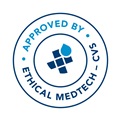
Ahmed Soliman ISMAIL
University of Alexandria
Egypt
Title: Reevaluation of combining spreader graft to alar flare technique in management of nasal valve collapse
Biography
Biography: Ahmed Soliman ISMAIL
Abstract
Introduction: Internal nasal valve collapse is a troublesome that the Otolaryngology doctors faces in many patients suffering from inadequate nasal breathing. There are two main suggested reasons for inadequate nasal breathing at the internal nasal valve region; collapsing alar cartilage and narrow nasal angle. While most of the new literature emphasizes the spreader graft technique, I believe that flaring technique still plays an important role in management this challenging quest.
Aim: The aim of the present study is to re-evaluate the role of combining alar flare technique to spreader graft in management of internal nasal valve collapse.
Patients & Methods: 56 patients were included in the present study that underwent different surgical techniques for management of internal nasal valve collapse. None of the patients had undergone any nasal surgical repair procedure to his or her condition before. Spreader graft technique have been used alone in 10 patients, while combined alar flare with spreader graft technique was used in 46 patients through an open rhinoplasty approach. The time of surgical procedure, post-operative healing time, subjective scoring of nasal airway breathing before and after surgery and the degree of nasal dryness were recorded and compared between the two surgical groups. The post-operative evaluation period ranged from 3 to 5 years.
Results: In the first group of patients who underwent spreader graft technique alone all patients have reported an initial improvement in nasal airway breathing but only 80% of them have sustained these results after 4 years. In the second group of patients who underwent a combined alar flare with spreader graft technique, 95.7% of patients have sustained these satisfactory results after 5 years of surgical procedure.
Conclusion: The combined alar flare with spreader graft technique still provides better results than any of the two surgical techniques alone.

